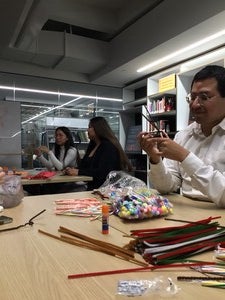Highlights from the Labriola Center
This past November, the Labriola Center hosted and partnered on various events that touched on the duality and diversity of Indigenous peoples for Native American Heritage Month. We also hosted the winner of the Labriola Center's Annual Book Award, Dr. Valerie Lambert in our newly renovated space.
Annual Labriola Book Award with Dr. Valerie Lambert
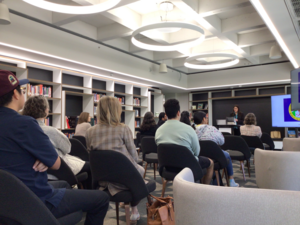
The Labriola Center's Annual Book Award began in 2008 and is national in scope. This award seeks to promote contemporary work by Indigenous scholars which benefits Indigenous peoples and nations. Books that have been submitted for consideration for the Labriola Center American Indian National Book Award have crossed multiple disciplines or fields of study, but must focus on topics and issues that are pertinent to Indigenous peoples and nations. This year, Dr. Valerie Lambert (Choctaw) won the 2022 Labriola Book award. Read more about the Labriola Center's Annual Book Award event here.
Native American Heritage Month Kickoff
At West campus, the Labriola Center participated in a Native American Heritage Month (NAHM) Kickoff with American Indian Student Support Services, on Fletcher Lawn. Among those who tabled were the School of Sustainable Engineering and the Built Environment, Fitness and Wellness, College of Health Solutions, Edson UG Student Services, and the School of Criminology and Criminal Justice: Research on Victimization Lab.
At Tempe campus, the Labriola Center hosted the NAHM Kickoff on the south corner of Hayden Library.
The Labriola Center's Library Aides Monica Howard (Diné) and Mafi Pamaka (Tongan) created a stellar playlist for the Kickoff on Spotify, which includes contemporary music from Indigenous tribes across the globe. You can listen to the NAHM Kickoff playlist here.
Jean Chaudhuri Exhibit
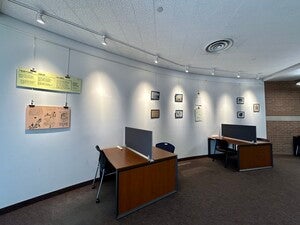
The Labriola Center at Fletcher Library had the opportunity to display Jean Chaudhuri's collection on the third floor. Vina Begay (Diné) archived Jean Chaudhuri's collection this past year. Jean Chaudhuri was an incredible figure in the American Indian community. She was an activist, a playwright, a director of several organizations, and established the first urban clinic for Indigenous peoples in the 1970's. Jean Chaudhuri also saved the Phoenix Indian School from demolition and a land-swap.

The exhibition includes her work as director of Indian Women in Progress, where she advocated for Indigenous women and representation, particularly during the American Indian Movement. To highlight her advocacy with Indigenous women, Vina put photographs of missing Indigenous women in picture frames. Missing and Murdered Indigenous Women continues to be an epidemic in Indian country. Posts of Jean's archive include her work directing Traditional Indian Alliance, which was part of the establishment of the Tucson Indian Clinic in Tucson, Arizona, the Phoenix Indian School opposition, and her work as a playwright. You can learn more about Jean Chaudhuri from the Jean Chaudhuri Papers on Arizona Archive. Vina Begay, Mafi Pamaka (Tongan), Nataani-Hanley-Moraga (Diné and Lakota), and Jewel Cummins helped design and set up the exhibit. Thank you to Casey Gipson at Fletcher Library for helping bring this exhibit to fruition. This exhibit will be up until mid-December.
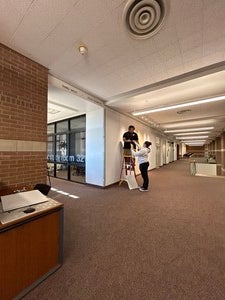
Veteran's Day Pow Wow
On Saturday, November 11th, the Labriola Center tabled at ASU's 20th annual Veteran's Day Pow Wow. The Pow Wow was from 11 a.m to 10 p.m. Library Aides Monica Howard (Diné), Nataani Hanley-Moraga (Diné), and Mafi Pamaka (Tongan) tabled at the Pow Wow. They provided children's books and coloring activities for family members.
Due to the pandemic, this Pow Wow was postponed for the past couple of years. Professor Jacob Meders (Machoopda/Maidu)directed this year's Veteran's Day Pow Wow. Professor Meders is an assistant professor in the New College of Interdisciplinary Arts and Science at Arizona State University on West Campus. A gallery exhibition called "Native Veterans Print Exhibition" was unveiled. The exhibition was created in collaboration with Heard Museum and Native Artists Resource Group, and made possible by the Arizona Department of Veterans’ Services in combination with the Veterans Print Workshop instructed by ASU West campus Associate Professor of Interdisciplinary Arts and Performance (IAP) Jacob Meders.
Read more about the Pow Wow here.
Coptic Bookbinding at Fletcher Library
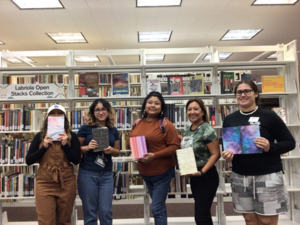
Coptic bookbinding is an ancient artform. Our librarian and archivist, Vina Begay led this workshop. As an archivist, Vina is passionate about using materials free of chemicals so that writings and photographs are preserved for the long term. The paper we used for the coptic bookbinding workshop was acid-free, meaning the ink from writing will not fade over time. Vina recommends Japanese paper, which is the most natural form of paper. For book conservators, they use the fibers from Japanese paper for repairing old books. Acid-free glue is also an important component for archivists and coptic bookbinding. The glue we used is called "Lineco Neutral pH adhesive." Bookbinding kits were bought from amazon and within each kit contained flat waxed thread, sewing needles (hooked and straight needle), a thimble, 6 inch bone folder, book binding glue brush, awl, and 4 binders. For the hardcover cover, we used Chipboard, which is an engineered wood product manufactured from wood chips.
The session was filled with smiles and determination. By the end of the session, most of the participants were able to finish their journal.
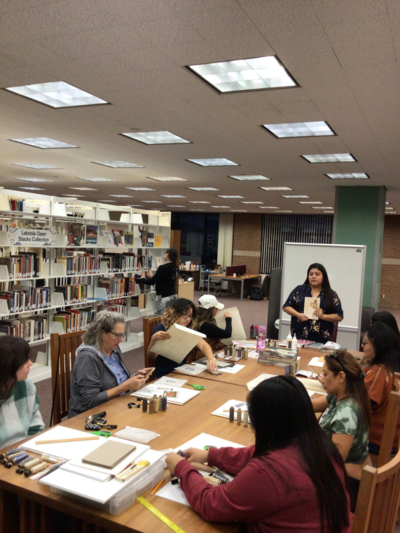
Print and the Protest

Jacob Meders (Machoopda/Maidu) is an assistant professor in the New College of Interdisciplinary Arts and Science at Arizona State University on West Campus. Jacob Meders has used archives to inform his printmaking, where he reexamines documentations on Native peoples that are stereotypical and deploys bookforms and prints as a vehicle to challenge new perceptions of Native Americans. In 2011 Jacob established WarBird Press, a fine art printmaking studio that he operates as the master printmaker in Phoenix, AZ. He possesses a BFA in painting with a minor in printmaking from Savannah College of Art and Design and a MFA in printmaking at Arizona State University.
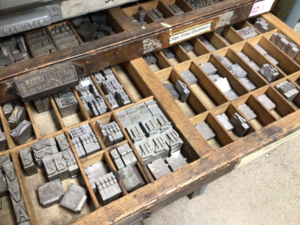
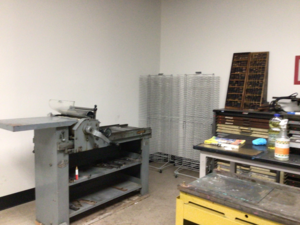
His print shop is hidden underground on the lower level of the university center building, UCB B119. When Professor Meders showed me his print shop, we entered a door with large theater bulbs arching over its entrance. Past the stairwell and through swinging doors, we entered a short hallway to his print shop. The space used to be a gym, but has been repurposed. Exposed pipes in the ceiling have been giving Professor Meders trouble: there is a leak that has rusted the surface of Professor Meders' mammoth metal printing press. Despite this trouble, Professor Meders' is welcoming and happy to host students for the "Print and the Protest" workshop. The purpose of this workshop is to introduce students to the archives at the Labriola Center and use archives as a method for printmaking.
Several students arrive, including participants from ASU staff. We begin the session by presenting on archives available at the Labriola Center. I brought in last year's posters created for the Jean Chaudhuri Exhibition. We are currently hosting an exhibition of Jean Chaudhuri on the third floor of Fletcher, which is available to view by the end of mid-December. I brought in images of her writings, her flyers created for saving the destruction and land-swap of the Phoenix Indian School. Many people do not know about the incredible work Jean Chaudhuri did for her community, and because she was an activist, I thought that her work should be shared and presented at the Print and the Protest workshop. You can learn more about Jean Chaudhuri's papers on the Arizona Archive website here.
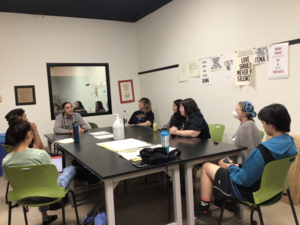
Professor Meders proposes that we create a phrase with three words. Why three words? Because, like poetry, words in all their simplicity evoke emotions beyond what is simple. Words, if used with intention, make you reflect. Words can also be a tool for manipulation.
"Anger and fear is a way to control and manipulate people. When you approach something and you feel either of these emotions, evaluate your body language and identify how to control your reaction. What is the process for your heart to stay calm? How do you persist in your life and insist people around you to do better? Do we give words of encouragement to keep going on despite trauma? Do we use words that evoke visceral references?"
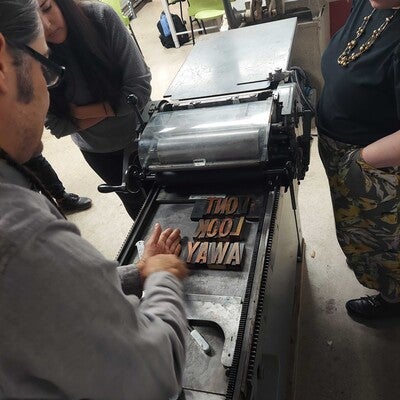
In regards to the atrocities happening in Gaza, we decided to choose three words that reflect on violent colonialism. This took almost half the session, as it seemed extremely difficult to encompass that trauma into three words. However, the students chose the words, "DONT LOOK AWAY." Witnessing is a powerful choice, whether that be witnessing and not ignoring the violence in our world or even the violence within ourselves. What is something that you have been avoiding in your life? What is something that calls your attention, however you have avoided its gaze?
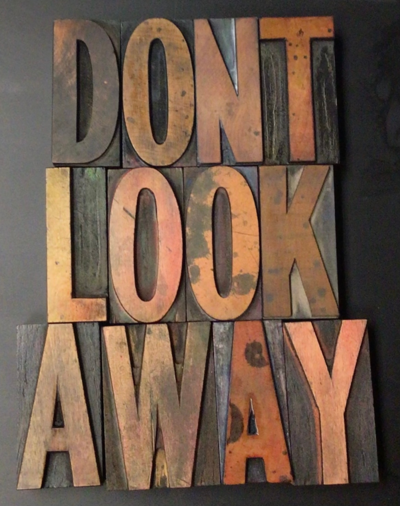
We encourage you to extend your printmaking learning by taking Professor Meders' class in spring 2023, course IAP 394 number 27529 and to visit Professor Meders in his print shop!
Craft and Learn Beading Workshop
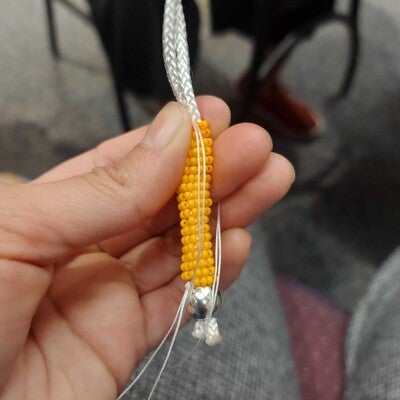
On Thursday, November 16, the Labriola Center, American Indian Student Support Services, and the Sexual and Relationship Violence Program partnered on a workshop based on open ended conversations on relationships and cultural healing through a beading lesson with AISSS' student aide, Victory. The workshop began with a short presentation, led by Yitazba Largo-Anderson (Diné). In the presentation, Yitazba wove in the historical relationship between Indigenous peoples and academia through the lens of colonialism and sovereignty. AISSS' Elder in Residence, Janelle Allen (Cherokee and Diné) was present. She is from the United Keetoowah Band of Tsalagi (Cherokee), born into the Tsiskwa (Bird) clan and Diné (Navajo), born from the Tódich'ii'nii (Bitter Water) clan. The Elder-in-Residence is a program where elders from a local Indigenous community spend approximately 15 hours per week mentoring students, offering workshops on their traditional expertise, giving talks and participating in discussions at all four AISSS centers to foster cultural, academic, social, and spiritual support for Indigenous students as well as to enrich the campus community. Within the workshop, Victory taught participants how to create a beaded keychain using seed beads, nylon thread, beading needles, key rings, and paracord.

Lofi Study Session and Community Art Party
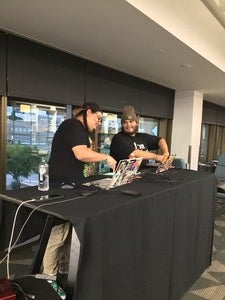
The Labriola Center at Hayden Library hosted our annual Lo-Fi Study Session in our newly renovated space. In preparation for finals week, multiple local Indigenous DJs performed live Lo-Fi and DJ sets for students to study to. The DJs who performed were Prod.byHZO (Diné/Hunkpapa), Alex Castles (O’odham), Acro (Hopi), and Ishaboi (O’otham/Diné).

In addition to the Lo-Fi Study Session, there was an art party, led by the Labriola Center's Library Aide Elena Dominguez (Mexican American and Pascua Yaqui) and AISSS' Elder in Residence Esther Nystrom (Diné). Esther Nystrom is owner of Bitter Water Designs. She is a licensed teacher and Native American Culture & Historical Educator. Esther creates beaded jewelry, sews, and is currently the Elder in Residence at AISSS at Polytechnic, but often travels to Tempe campus, as well.
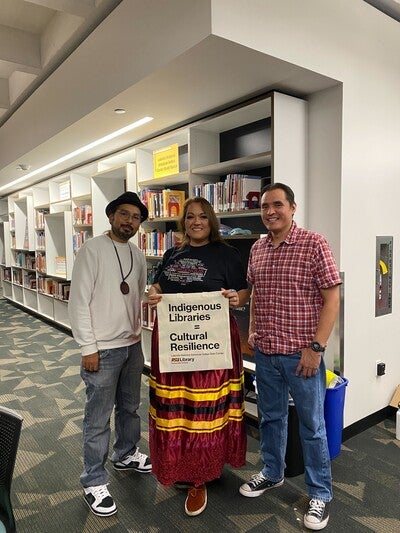
The art party was centered on community art and conversation through mixed media. Questions included, "how do you define community at home? How do you build that community here at ASU?" Students had the opportunity to collaborate on making a poster on butcher paper. The purpose of this is to create a conversational collage on what community means to students at ASU. In Addition, the Makerspace had various art supplies available for creating Christmas decorations.
